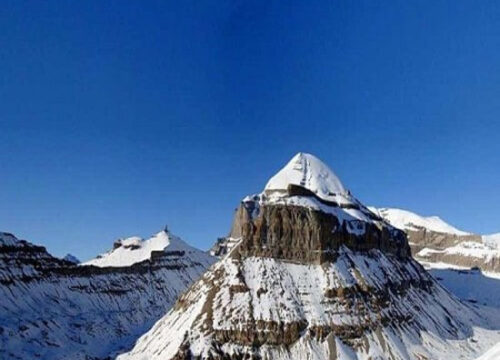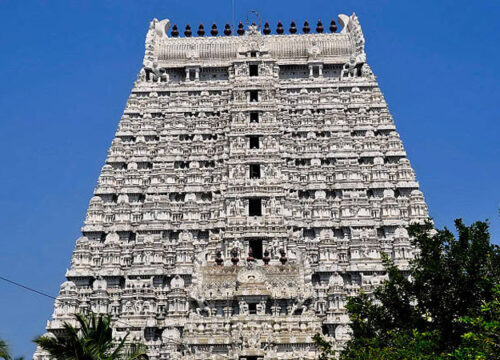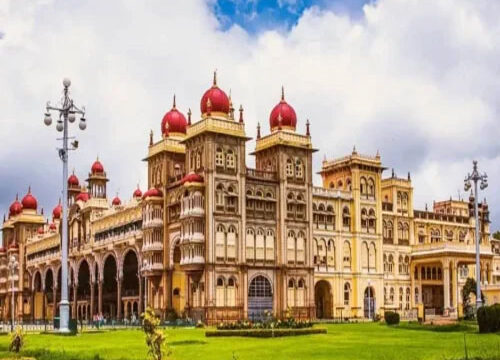Rajasthan wildlife with Chambal Safari -14 Nights/15 Days
Duration
Destination Cover:- Chambale-Ramtharafort- Ranthambore Tiger National Park- Bundi-Tonk-Jawai Leopard Safari- Jaipur- Jhalana Leopard Safari – Sariska National Park
Duration: 14 Nights/15 Days
Rajasthan, a state in northern India, boasts a rich diversity of wildlife despite its predominantly arid landscape. One of the key wildlife destinations in Rajasthan is the Chambal Wildlife Sanctuary, located along the Chambal River in the districts of Kota and Bhind. Here’s some information about Rajasthan’s wildlife with a focus on Chambal Safari:
- Chambal Wildlife Sanctuary: The Chambal Wildlife Sanctuary is renowned for its conservation efforts, particularly for the critically endangered Gharial crocodile, the endangered Gangetic River Dolphin, and various species of turtles. It provides a unique habitat for these species amidst the ravines and riverine forests.
- Gharial Crocodile: The Gharial, often referred to as the fish-eating crocodile, is one of the main attractions of Chambal. With its long, slender snout, the Gharial is well-adapted for catching fish in fast-flowing rivers. Chambal provides a safe haven for these endangered reptiles.
- Gangetic River Dolphin: The Gangetic River Dolphin, another critically endangered species, finds sanctuary in the clean waters of the Chambal River. Visitors can take boat safaris to catch a glimpse of these elusive creatures as they surface for air.
- Birdwatching: Chambal is also a paradise for birdwatchers, with over 300 species of resident and migratory birds. Species such as Indian Skimmer, Sarus Crane, and various birds of prey can be spotted along the riverbanks and in the surrounding scrubland.
- River Safari: One of the best ways to explore the sanctuary is through a river safari. Boats take visitors along the tranquil waters of the Chambal River, offering opportunities to observe wildlife in their natural habitat.
- Other Wildlife: Apart from Gharials, Dolphins, and birds, Chambal is also home to species like Mugger crocodiles, various species of turtles, smooth-coated otters, and different types of fish.
- Conservation Efforts: The sanctuary is actively involved in conservation initiatives to protect its wildlife. These efforts include habitat restoration, anti-poaching measures, and community engagement programs.
- Tourism and Accessibility: Chambal Safari offers organized tours and safaris for tourists, providing them with an opportunity to experience Rajasthan’s wildlife in a unique setting. The sanctuary is easily accessible from nearby cities like Agra, Jaipur, and Delhi.
- Tigers:
- Ranthambore National Park: Located in southeastern Rajasthan, Ranthambore is one of the most famous tiger reserves in India. It’s known for its high density of Bengal tigers. The park’s varied terrain, including dry deciduous forests, lakes, and rocky outcrops, provides suitable habitat for tigers and their prey species.
- Sariska Tiger Reserve: Situated in the Aravalli Range, Sariska Tiger Reserve is another important tiger habitat in Rajasthan. Though the tiger population faced challenges in the past due to poaching, efforts have been made to reintroduce tigers into the reserve. Sariska is also home to other wildlife species like leopards, striped hyenas, and various species of deer.
- Other Areas: Tigers are occasionally sighted in other protected areas and forest reserves of Rajasthan, such as the Mukundra Hills Tiger Reserve and the Darrah National Park. However, sightings outside of Ranthambore and Sariska are relatively rare.
- Leopards:
- Leopards are more adaptable to different habitats compared to tigers and can be found in a variety of landscapes across Rajasthan.
- Jawai Bandh: Located in the Pali district of Rajasthan, Jawai Bandh is known for its high population of leopards. The rugged terrain around the Jawai Dam provides suitable rocky habitats for these elusive cats.
- Other Areas: Leopards can also be found in the Aravalli Range and other forested areas of Rajasthan, including Mount Abu Wildlife Sanctuary, Kumbhalgarh Wildlife Sanctuary, and Sita Mata Wildlife Sanctuary. They often thrive in areas with rocky outcrops and dense vegetation, where they can hunt undisturbed.
- Jhalana Leopard Reserve
Jhalana Leopard Reserve is a relatively small but significant wildlife sanctuary located in the heart of Jaipur, the capital city of Rajasthan, India. Here’s some more information about Jhalana Leopard Reserve:
- Location: Jhalana Leopard Reserve is situated on the outskirts of Jaipur, covering an area of approximately 20 square kilometers. Despite its proximity to a bustling urban center, the reserve provides a vital habitat for leopards and other wildlife species.
- Leopard Population: Jhalana is known for its relatively high density of leopards. The reserve is estimated to be home to around 30-35 leopards, making it one of the best places in India to spot these elusive cats in the wild.
- Habitat: The terrain of Jhalana Leopard Reserve consists of rocky hills, scrubland, and dense vegetation, providing ideal conditions for leopards to thrive. The rocky outcrops and caves offer shelter and vantage points for the leopards, while the vegetation supports a variety of prey species.
- Safari Experience: Visitors to Jhalana Leopard Reserve can embark on safari drives in designated safari zones within the sanctuary. These guided safaris offer opportunities to spot leopards and other wildlife species such as striped hyenas, desert foxes, nilgai (blue bull), spotted deer, and various bird species.
Overall, the Chambal Wildlife Sanctuary offers a fascinating glimpse into Rajasthan’s diverse wildlife, making it a must-visit destination for nature lovers and wildlife enthusiasts.
Detailed Day Wise Itinerary
On arrival at Delhi International Airport, you will be welcome by a Getaways India representative. Later you will be transferred to your hotel for an overnight stay.
Today post breakfast you will drive for Chambal Safari Lodge (Mela Kothi). On arrive at Mela Kothi in Chambal. Spend the day exploring the Chambal River, known for its wildlife and boat safaris. Look for Gharials, river dolphins, and various bird species. Enjoy the scenic surroundings.
Today post breakfast you will take a jeep safari or a guided walk to explore the Chambal Wildlife Sanctuary. Visit the nearby villages and learn about the local culture and traditions.
RIVER SAFARI : This includes entry tickets for the National Chambal Sanctuary, services of a trained naturalist, river safari, nature walk through the ravines and at the Chambal Safari Lodge. This does NOT include cost of travel to and from the National Chambal Sanctuary.
ATER FORT VISIT” Trip through ravines to Fort Ater
This includes the cost of entry tickets for the National Chambal/ Sanctuary & Fort Ater, services of an escort, 3 km guided walk through the ravines up to Fort Ater and 3 km walk back to base camp/ at the edge of the river, guided tour of Fort Ater.
JEEP SAFARI-: 1. SARUS CRANE WETLAND AREA
This includes the cost of travel, services of a trained naturalist and escort, a 3-4 hours Jeep Safari through low-lying wetland areas north of the Yamuna for spotting Sarus Cranes and other wetland birds.
BLACKBUCK SAFARI :-
This includes the cost of travel, services of a trained naturalist and escort, a 3-4 hours Jeep Safari along the Chambal Ravines, through villages for spotting Blackbuck herds and bird-watching.
ETAWAH & QUILA PRATAP TOUR
This includes services of an experienced escort, tour of the colonial heritage of Etawah associated with A.O. Hume – a leading figure of the civil service also known as the father of Indian Ornithology and founder of the Indian National Congress. The tour also includes a visit to the heritage conservation site at Quila Pratap, with ruins dating from the 13 th to 19 th century. This does NOT include the cost of travel.
TOUR OF BATESHWAR :-
This includes a guided tour of the heritage village of Holipura/or a tour through the animal/religious fair, the medieval temples of Bateshwar, and visit to the terrace of The Kunj at Bateshwar overlooking the ghats and temples. This does NOT include cost of travel to and from Bateshwar.
Post breakfast you will drive to Ramathra Fort:
Breakfast at the hotel later you will drive for Ramathra Fort. On arrival Travel to Ramathra Fort. Explore the historic fort, enjoy a traditional Rajasthani meal, and take in the breathtaking views of the countryside.
Ramathra Fort lies between two of India’s internationally famous wildlife reserves. Keoladeo Ghana Bird Sanctuary in Bharatpur and Ranthambore Tiger Reserve in Sawai Madhopur. The closest wilderness area, Kailadevi national Park, is just 15 Kms away.
The Fort, The Lake and the countryside are the three big attractions of Ramathra Fort.
Visit the surrounding villages, go for a nature walk, or simply relax at the fort. Take in the serene atmosphere and the natural beauty of the area. Visit points in Ramathra Fort:-Boating At Sunset, Bird watching, wilderness drive, Night Drive into the Buffer Zone of Kaila Devi National Park, Wilderness Drive, A complete walking tour of Ramathra village, a small hamlet of farmers and cattle herders, takes about 3 hours. You see all kinds of work associated with tending crops and animals.
1. In a row boat in the kalisil dam. It is peaceful & picturesque with breathtaking views of the
sunset & rich with birdlife. we provide life jackets, a bird book & also a pair of binoculars
2. There are a variety of species of birds seen around the Fort & Lake .Bird watching can be done at the lake, at the marshes below the fort or during your walk to the village
3. Set out in a rowing boat to an island on the lake with breathtaking views & lots of birds & ducks, relax & enjoy a hot meal
4. Tour the countryside, visit ‘Gujar’ hamlets, and explore a cavernous gorge and an old cave temple,look out for possible wildlife sightings enroute.
5. Drive across the Daang plateau stretching east to the Chambal river valley and as far as Ranthambhore to the south,This area is filled with gorges, Until recently, tigers roamed the area but visitors regularly see several varieties of deer,blue bulls, wolves, jackals, hyenas, foxes and if lucky, a wild boar, bear or leopard.
6. An hour’s drive from Ramathra, the city palace in Karauli and the temple of Madanmohanji are very well preserved. The Karauli bazaar is a busy place to explore and shop in. Lacquered bangles are special and one can see bangle makers at work.
7. A ride through the village or to the Lake
Ramathra Fort- Ranthambore National Park , oday take a leisurely breakfast you will travel to Ranthambore National park. In the afternoon, embark on a jungle safari in Ranthambore National Park.
Enjoy morning and evening safaris in the national park. Keep an eye out for tigers, leopards, and a variety of wildlife. National Chambal Gharial Sanctuary in Sawai Madhopur is an incredible tourist spot in Ranthambore. Chambal River Safari in Ranthambore is a rendezvous with nature. Apart from Jungle Safari in Ranthambore, Crocodile Safari or Chambal River safari at National Chambal Gharial Sanctuary is one of the best options. To explore the crocodile, Gharial and amazing diversity of birdlife, Chambal River is a wonderful site at Palighat Ranthambore, where you can enjoy interesting inhabitants by boat rides.
Explore Ranthambore Fort, visit the local temples, and enjoy the lush surroundings. Consider additional safaris if you wish.
Post breakfast you will drive to Ranthambore National Park. visit the Taragarh Fort, explore the intricately designed step-wells, and stroll through the charming streets of Bundi.
Includes Tara Garh Fort , Chitrshala , Chatrmahal, Rani Mahal, & Badal Mahal. Heritage Walk,from Fort to Rani Ji Ki Baori. Later sightseeing, Sukhmahal museum. Drive back to Kota. After Lunch evening Boat Safari at Chambal river for 2 hrs.
After Breakfast drive for GARADIYA MAHADEV TEMPLE (35 Kms from Kota). You Explore Kota's historical sites such as the City Palace, Garh Palace, and Jag Mandir. Don't miss the picturesque Chambal Garden.
will enjoy the best view of Chambal river along with natural fall at SHIVA TEMPLE. City Place (Garh Palace) After the visit of the best view of Chambal you will visit the city Palace Kota.
Today you will drive for one of the finest safari homes for leopards in Rajasthan, Jawai.
Jawai Bandh - home for the leopards came to the limelight after recent coverage of the Leopard Safari program on Discovery channel. The area is also famous for Bera Rajasthan safari so if you are looking for a leopard safari near Bera Leopard Reserve or Bera Leopard Sanctuary and want to stay in a Camp in Jawai, then would strongly recommend a two-night stay at Jawai.
You will take in the evening or the next day morning Leopard safari with a naturalist.
Morning you may take a nearby resort for a walking tour or you may go for Leopard safari, near by aera of the resort. Later post breakfast you will drive to Jaipur Pink City, Upon arrival check-in at the hotel, day will be free. Evening a dinner with the finest restaurant in the heart of the city Bar Palladio
Enjoy a morning safari in Jhalana Leopard Conservation Reserve. Keep an eye out for leopards and other wildlife. Later back to the hotel & and take a guided sightseeing tour of Jaipur. Visit the Amber Fort, Hawa Mahal, and the City Palace. Explore the bustling markets of Jaipur and indulge in local cuisine. Explore the Jantar Mantar, Nahargarh Fort, and Albert Hall Museum from out side. Spend your evening shopping for souvenirs in Jaipur's markets.
Enjoy a morning at Jhalana Leopard Conservation Reserve. Keep an eye out for leopards and other wildlife. Back to your hotel take a delicious breakfast, further check out from your hotel & drive for another national park in Rajasthan Sariska., On arrival check in at the hotel. and visit the Sariska Palace.
Early morning explore Sariska National Park by open jeep go for a safari. Back to the hotel for breakfast, later in time, you will drive for Delhi.
On arrival at Delhi drop at the international airport board the flight back to home with ton of good memories.











